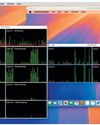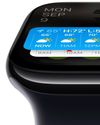
Organic light-emitting diode (OLED) display technology has only ever been used in a limited way in Apple products, being chiefly found on the iPhone and Apple Watch. That looks set to change. With the new iPad Pro sporting an Ultra Retina XDR display that uses Tandem OLED, you can expect OLED to appear in even more Apple products in future, including Apple computers such as the MacBook Pro and MacBook Air. So what is OLED, and what advantages does it offer over the more common LCD and LED display technologies that are in use today?
There’s a lot of jargon involved with display tech, so it’s worth a quick recap. Most displays currently used for computers, tablets, TVs and other devices use LCD technology – which stands for liquid crystal display. These displays sandwich a layer of liquid crystal material between thin glass panels. The liquid crystals can change colour when an electric current is passed through them in order to create the image that we see on screen. There are several different types of LCD available, although the most popular these days is known as IPS – or in-plane switching – so you may often see a display referred to as IPS or IPS-LCD rather than just plain old LCD.
LED and LCD
Denne historien er fra July 2024-utgaven av MacFormat UK.
Start din 7-dagers gratis prøveperiode på Magzter GOLD for å få tilgang til tusenvis av utvalgte premiumhistorier og 9000+ magasiner og aviser.
Allerede abonnent ? Logg på
Denne historien er fra July 2024-utgaven av MacFormat UK.
Start din 7-dagers gratis prøveperiode på Magzter GOLD for å få tilgang til tusenvis av utvalgte premiumhistorier og 9000+ magasiner og aviser.
Allerede abonnent? Logg på

Mac hardware
We help to solve your hardware hassles, from interrupted upgrades to running diagnostics

Give your iPhone a whole new look in iOS 18
Make your iPhone uniquely you

iPhone 16
Apple Intelligence-ready smartphone for the rest of us

Apple Watch Series 10
10th anniversary Watch is now slimmer with an even bigger display

AirPods 4
Apple's most affordable AirPods remain a brilliant buy

We. HEAR Pro
Room-filling sound from this stylish wireless speaker

HiDock H1
An impressive 11-port AI audio dock for conferencers

Adobe Premiere Elements 2025
Create eye-catching videos for sharing on social media

Photoshop 2024
Your imagination is the limit with this AI-powered pixel creator

Wispr Flow
Bring the power of AI dictation to DMs, documents and Discord chats